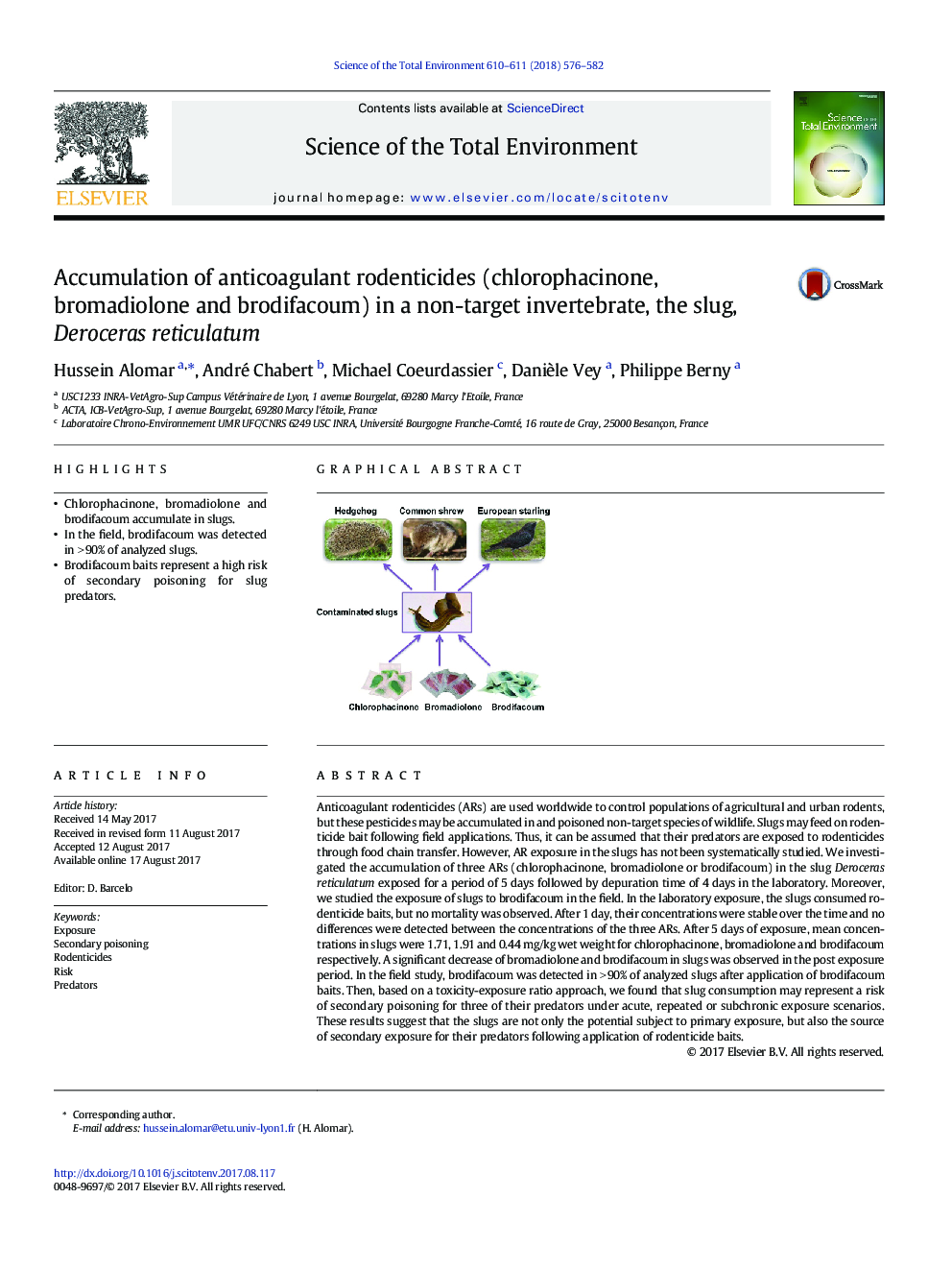| کد مقاله | کد نشریه | سال انتشار | مقاله انگلیسی | نسخه تمام متن |
|---|---|---|---|---|
| 5750223 | 1619692 | 2018 | 7 صفحه PDF | دانلود رایگان |
- Chlorophacinone, bromadiolone and brodifacoum accumulate in slugs.
- In the field, brodifacoum was detected in >Â 90% of analyzed slugs.
- Brodifacoum baits represent a high risk of secondary poisoning for slug predators.
Anticoagulant rodenticides (ARs) are used worldwide to control populations of agricultural and urban rodents, but these pesticides may be accumulated in and poisoned non-target species of wildlife. Slugs may feed on rodenticide bait following field applications. Thus, it can be assumed that their predators are exposed to rodenticides through food chain transfer. However, AR exposure in the slugs has not been systematically studied. We investigated the accumulation of three ARs (chlorophacinone, bromadiolone or brodifacoum) in the slug Deroceras reticulatum exposed for a period of 5Â days followed by depuration time of 4Â days in the laboratory. Moreover, we studied the exposure of slugs to brodifacoum in the field. In the laboratory exposure, the slugs consumed rodenticide baits, but no mortality was observed. After 1Â day, their concentrations were stable over the time and no differences were detected between the concentrations of the three ARs. After 5Â days of exposure, mean concentrations in slugs were 1.71, 1.91 and 0.44Â mg/kg wet weight for chlorophacinone, bromadiolone and brodifacoum respectively. A significant decrease of bromadiolone and brodifacoum in slugs was observed in the post exposure period. In the field study, brodifacoum was detected in >Â 90% of analyzed slugs after application of brodifacoum baits. Then, based on a toxicity-exposure ratio approach, we found that slug consumption may represent a risk of secondary poisoning for three of their predators under acute, repeated or subchronic exposure scenarios. These results suggest that the slugs are not only the potential subject to primary exposure, but also the source of secondary exposure for their predators following application of rodenticide baits.
177
Journal: Science of The Total Environment - Volumes 610â611, 1 January 2018, Pages 576-582
